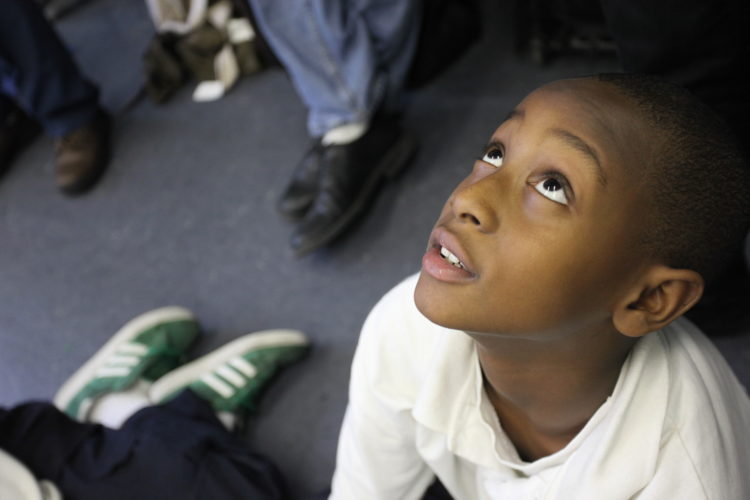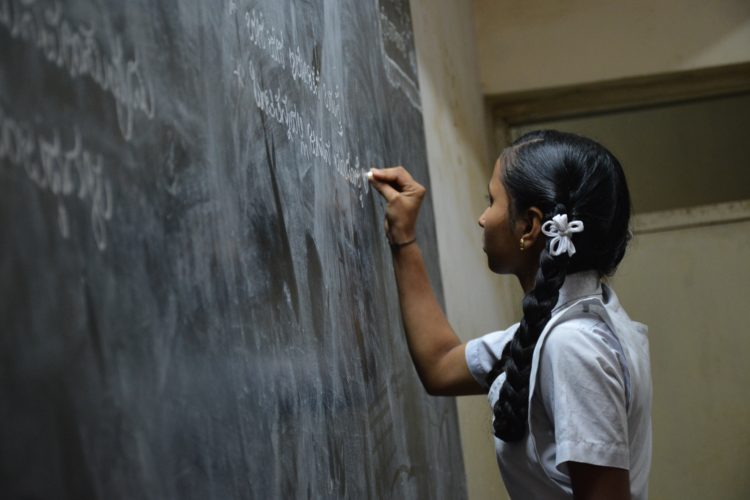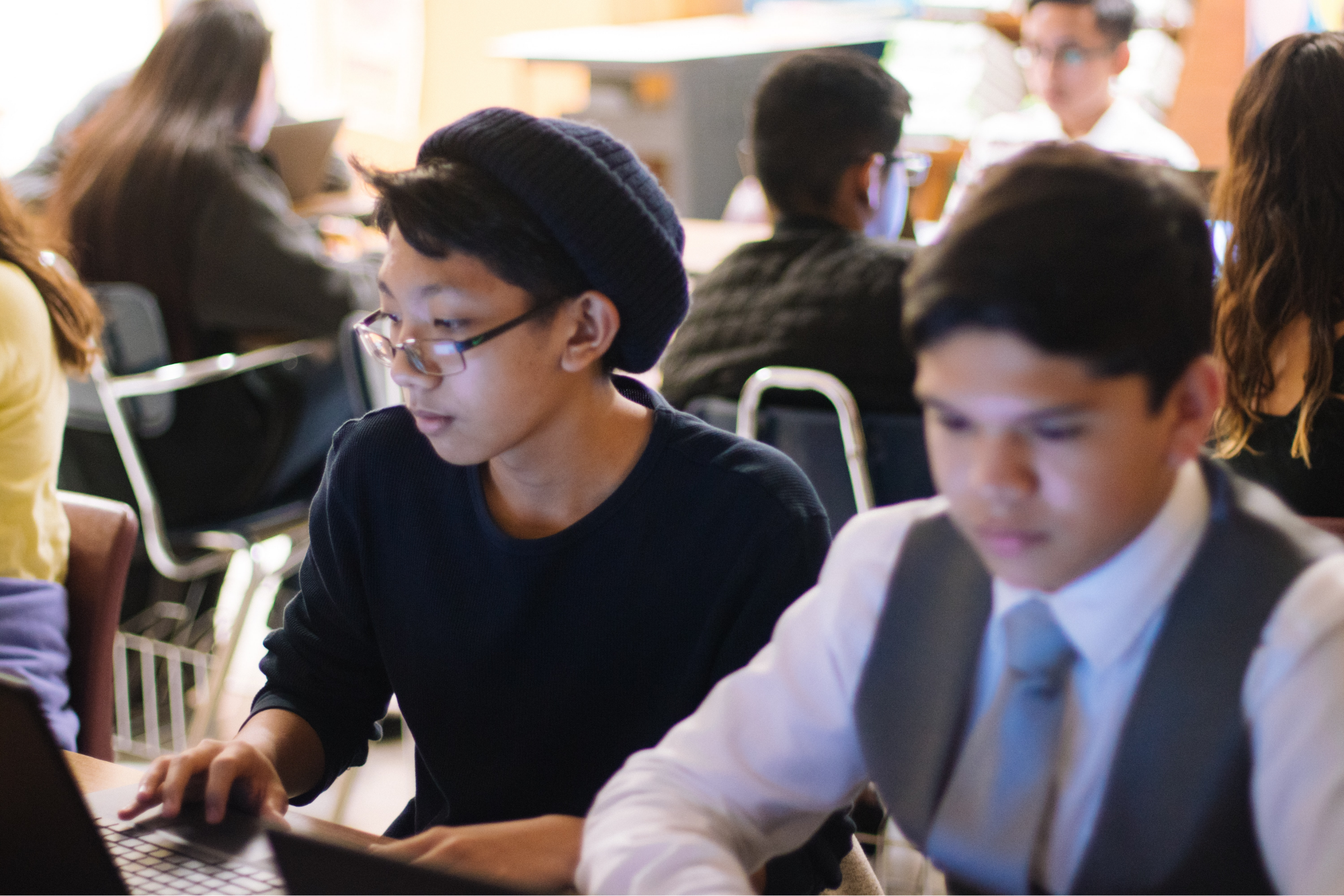“There’s a long way to go to providing agency and power to communities who are immigrant newcomers,” grantee Adriana Villavicencio told me during a recent conversation we had on improving outcomes for English Learners (ELs). As a Foundation that supports research that aims to reduce inequality in youth outcomes, including on the basis of immigrant origins and language minority status, we believe that research can play a critical role in identifying strategies to extend that agency and power. To that end, we hope to encourage strong applications from researchers studying ways to improve outcomes for ELs and immigrant youth.
To amplify this work and identify promising new areas in EL research for potential applicants to explore, I recently spoke with Villavicencio, Hua-Yu Sebastian Cherng, and Nonie Lesaux, who have all pursued research in this field.
Villavicencio, an Assistant Professor of Educational Leadership and Policy Studies at New York University, and Cherng, Vice Dean for Research and Equity and Associate Professor of International Education at New York University, are investigating how school districts can address the academic and socio-emotional needs of recently-arrived English learners. With their grants, they are partnering with the Internationals Network, a system of New York City public high schools that exclusively serve newcomer students with limited English proficiency, and its Internationals Academy program, which aims to scale the model for smaller school districts.
Lesaux, the Roy Edward Larsen Professor of Education and Human Development and Interim Dean at the Harvard Graduate School of Education, as well as a member of the William T. Grant Scholars Selection Committee, has centered her work on improving literacy outcomes, including how urban middle schools can increase their capacity to build literacy development for ELs.
My conversations with Villavicencio, Cherng, and Lesaux below highlight the challenges ELs and their communities face, approaches that have been successful in improving outcomes for ELs, and questions for scholars in the field to pursue:
Identifying Challenges in EL Instruction and Research
What are the challenges facing ELs, their communities, and the school districts that serve them? What obstacles do scholars encounter when conducting EL research?
Nonie Lesaux: Serving English learners well starts with a strong core instructionally, and then builds from there. What you see in the field are real challenges with developing language and literacy skills among the entire population, and then [ELs] are a casualty of a setting that is not strong enough to begin with.
Hua-Yu Sebastian Cherng: From the district point of view, ELs are always constructed as a problem, a difficult to serve population. … It’s an alien identity for practitioners. [Districts] talk about an Arabic-speaking student in the same way we talk about a Mandarin-speaking student or a Spanish-speaking student.
Adriana Villavicencio: A lot of [EL] instruction is very deficit based. There’s some stigma around using your home language in school, when we know that that can be a huge support in your language acquisition and content mastery.
NL: For a long time, there was a real push on reading comprehension and helping teachers have a stronger literacy model when figuring out ways to teach vocabulary. This notion of academic language became very popular, this idea that all students should have access to the register of power … higher education and the professional world operates with this academic register. Then that fell out as a really controversial concept, as reductionist, suggesting that there’s one way to do things. I think we’re coming out of that now. There’s more of a push for dual language instruction and bilingual instruction and less implicit or tacit acceptance that this academic language is something that is better.
“Getting It Right”: Improving EL Outcomes
The Internationals Network serves as one example of a model that has approached EL instruction through an assets-based lens.
AV: The tactics [of Internationals] are a big part of [why it works]. It’s very asset based. It’s holistic. It’s valuing families and students that they serve, versus thinking about them as a problem to fix. That lens allows for a very different set of approaches. Now you’re trying to incorporate students, families, cultures, linguistic abilities, and linguistic diversity into their experience. Now you’re trying to incorporate families in authentic, meaningful ways that are culturally and linguistically relevant.
NL: There’s a real push for getting back to some bilingual instruction and dual language. … It’s a little more well rounded. There’s a focus on identity development as part of literacy instruction.
AV: You can’t underestimate the role of the leader being completely bought in and having that value system—communicating that value system to teachers, hiring teachers who also share in that philosophy, thinking about parent outreach in that way.
SC: For the Internationals, they target districts, which is exactly the level that I would say is good to target. Not so much schools or principals, but the district decisions. They’re all in. It’s not like a [professional development] model. With a lot of EL stuff in education, you do a PD and then there’s no metric of whether or not it made any difference whatsoever. The Internationals model is like “No, we don’t do PD. We’re building an academy for this school.” I think that’s why I think their model works.
AV:One of the biggest pillars of their curriculum and instructional piece—and it’s hard to do well—is the integration of content and language. Understanding that students, at whatever age group, are going to be more engaged and acquire the second language or third language more readily when it’s integrated in a meaningful way in the content material that they would be exposed to in “general ed” class.
NL: Content-rich ESL instruction, when it’s done really well—we see that in big districts like in California or New York—often former English learners outperform their non-ELL peers. That is because they have developed their reading and writing and listening and speaking skills to a level that’s probably a little bit higher; they have these advantages cognitively, from having worked across languages. That population reminds us that there are tremendous assets tied up in negotiating two languages. When we get the instruction right, it’s amazing.
Outside of the Internationals Network, school districts are experimenting with other models that engage ELs and their families beyond the classroom.
SC: In New York City, you have the Beacon model. Back in the day, 50 to 100 years ago, public schools weren’t just schools. People went there for medical checkups; they went there as a soup kitchen or [food] pantry if they needed it. A school was a community beacon. Not just in New York City but also Chicago, they’re experimenting with reintegrating or rebranding schools as more than just schools.
That, to me, is promising because [for] immigrant families, it’s hard for them to come by information … They’re [already] going to interact with schools in some way, because they have to, so if the school could also tell them about other things besides just education, like employment rights, what to do if you’re undocumented, what to do if like a police officer comes up to you—that must translate to better outcomes, particularly for immigrant families.
Looking Forward: New Approaches to the Field
What questions should scholars in the field pursue, and in what ways can they reframe their research?
NL: Questions about real time supports for educators and new tools for professional learning are really pressing. [Questions about how] to lift up diverse language communities without having to know the language; there are ways to build beautiful language learning communities, even if a teacher is an English only speaker. Questions about how English language instruction actually drives not just literacy development, but identity development and social emotional learning and adjustment. The ethnic, racial identity work that Adriana and others do—how does that connect to what we might do to promote English language proficiency? I think those are really interesting questions for today.
Researchers in the field need to look at students more holistically: to take into consideration the multiple identities that inform their experiences, to incorporate an assets-based lens into the research, and to bring their perspectives to the forefront.
SC: When I first started venturing into EL literature about eight years ago, I was shocked [and] horrified by how devoid of race it was. … EL research is still very devoid of any other identities besides language. Similar to school districts who see EL kids as, the only thing that’s wrong with them is that they can’t speak English—and there’s 1,000 things wrong with that sentence—[academics] have pretty much the same view of this. You have faculty that are very ill equipped to talk about any other identities, as if Spanish was the only thing that mattered.
NL: Some of this work has not had enough of an asset-based lens—that we don’t lift up the native language enough, that we talk about academic language in ways that suggest a sort of constrained view of what it means to be literate, and that we’re teaching this kind of normative register.
SC: Education research in general is drifting [toward] vertical measures, like test score measures, reclassification measures—these clunky academic measures. Tweaking them early on is not actually translating to better outcomes. Then people are like “Oh yeah, it’s not just about the test scores, but also about how kids live their lives.” That, I would be super curious about.
AV: Sometimes there’s this assumption that adults know best, but sometimes kids … can do a lot to shape their environment and to engage in conversations about how to change their environments so that students can thrive. It’s not necessarily a research question, but more of a mode or an approach to research, with students in mind and with the community in mind.
SC: In the Internationals Network, all of the students are also immigrants themselves. To tell them that they belong in the U.S.— I would love to see work that disentangles that a little bit more.
There’s also room for researchers to examine more of what’s working to improve EL outcomes, from introducing change at the leadership level to fostering relationships between schools, community partners, and districts.
AV: There’s a lot of research on what’s not working, and I think [there should be] more emphasis on interventions. Where should we put some of our resources? If staffing is a big issue, how can we staff up districts? How can we incentivize teachers to take on these roles and to see their work differently? When I say intervention, that could be a massive umbrella, like teacher education programs or leadership programs with this population in mind, and trying to scale or replicate some of the things that we think do or will have traction.
SC: [We’re] really looking at the leadership of the schools, and even secondarily the teachers. … School structures, school leadership—if you really want to change a school, that’s one really key component.
NL: The reality that we have to remember is the folks on the ground need a lot of support. And we need to be pragmatic and partnership-oriented to help them out.
AV: Schools can’t do it alone. Districts can’t do it alone. There are just so many competing priorities. If there are community-based organizations, networks like Internationals, or other partners that can really help frame certain problems of practice, along with district leaders, school leaders, or network leaders—I’ve seen that it’s just incredibly valuable. It’s really hard to do and it’s so time consuming. In academia, there’s really no incentive to do that. I think there’s a lot there that you can leverage for actual change, transformation, or improvement to reduce inequality.







